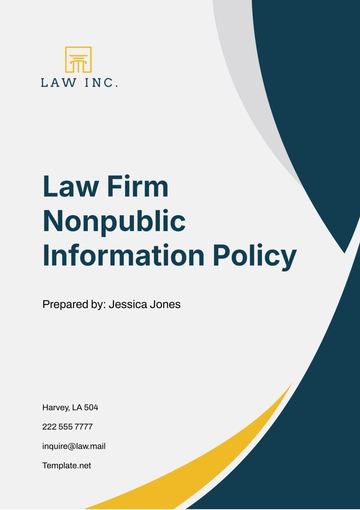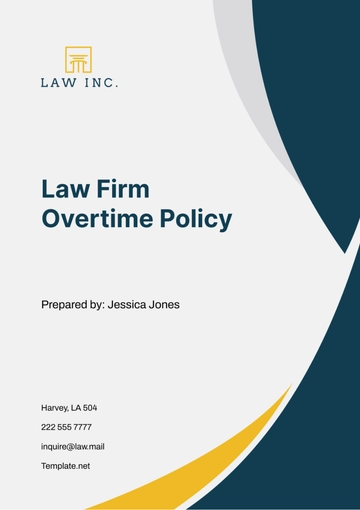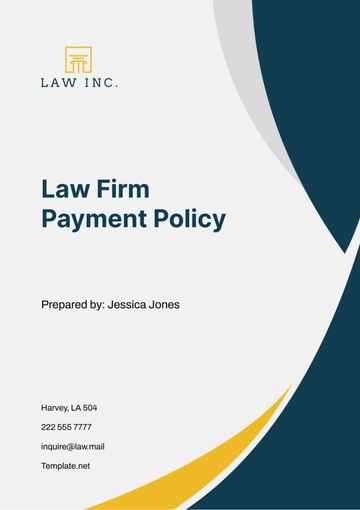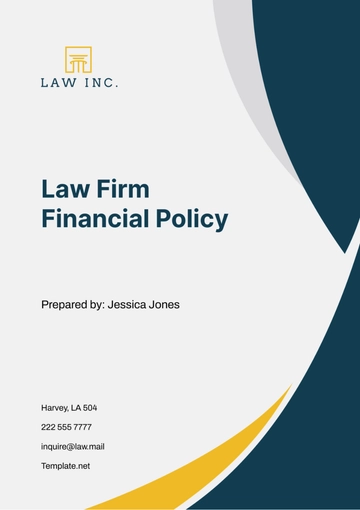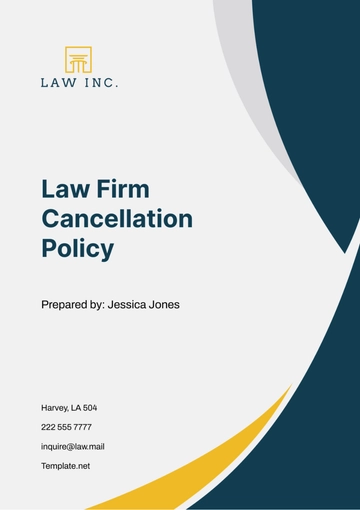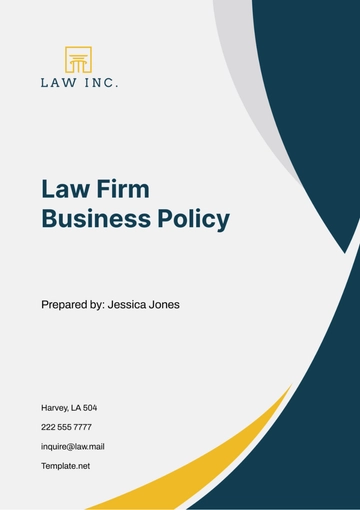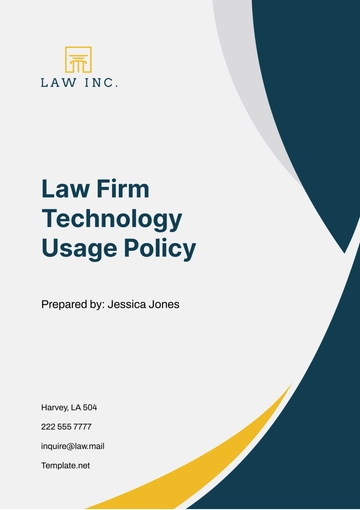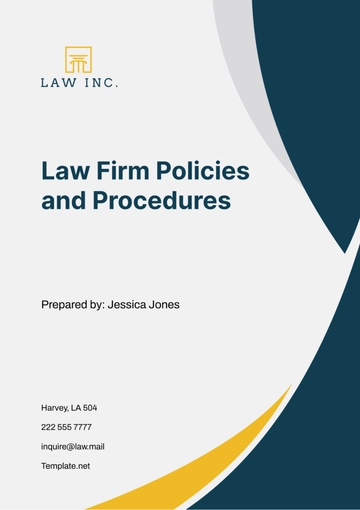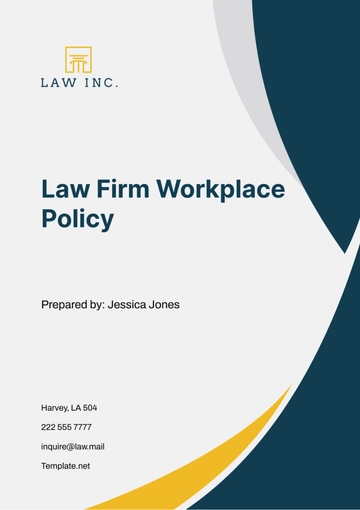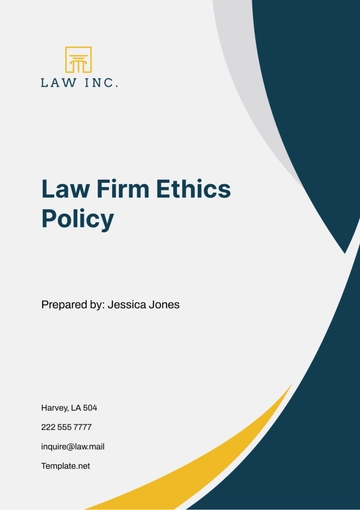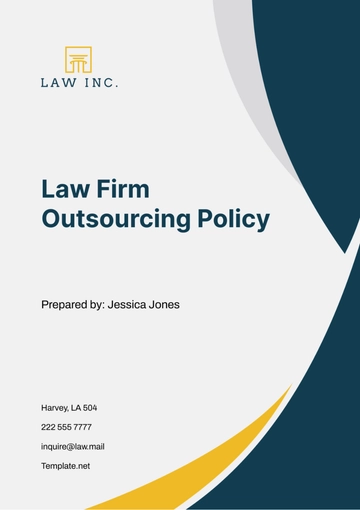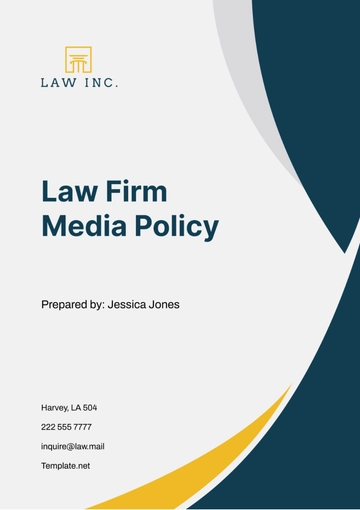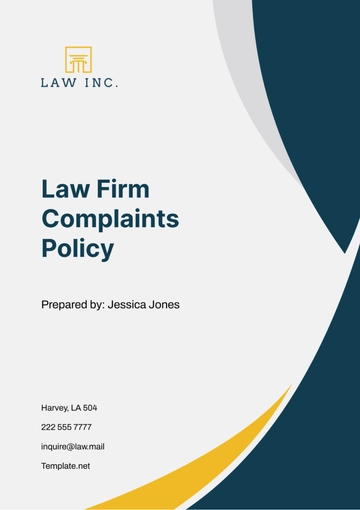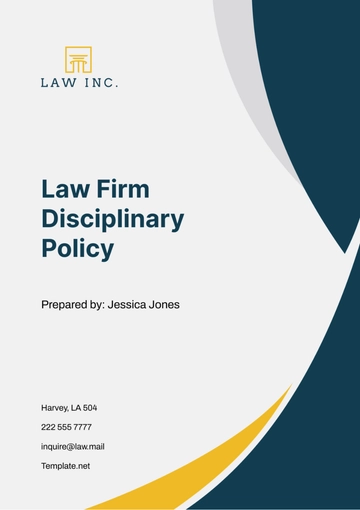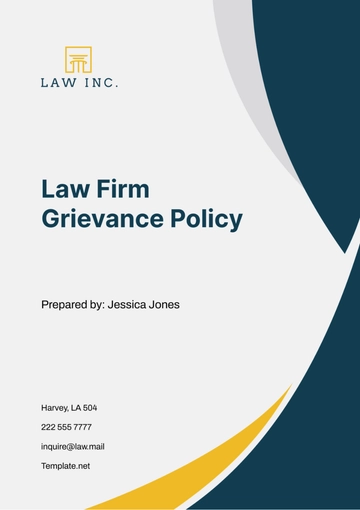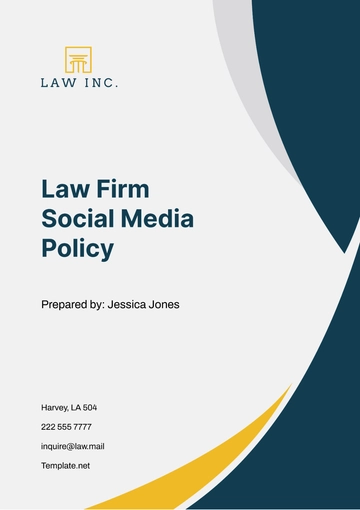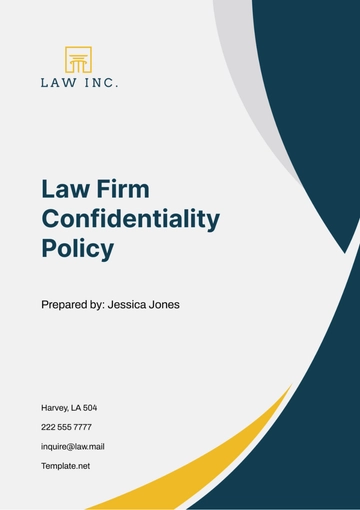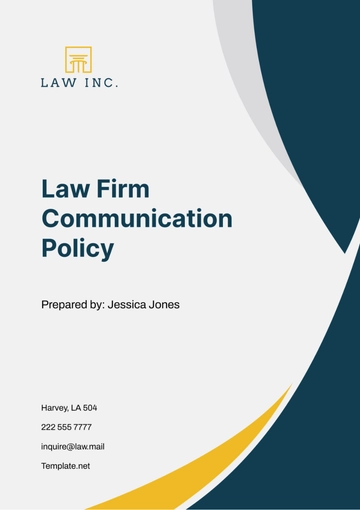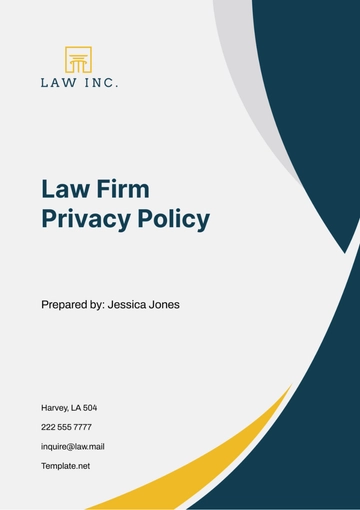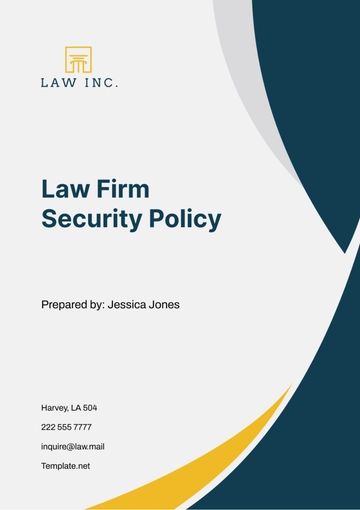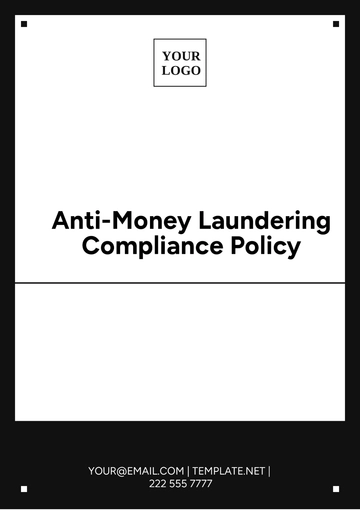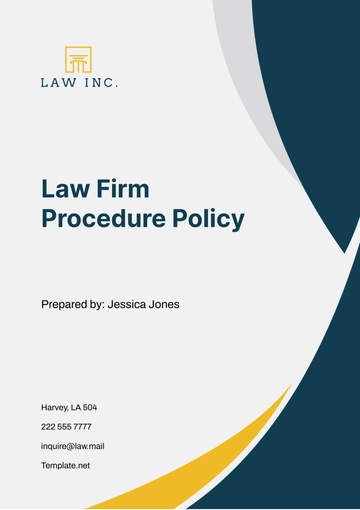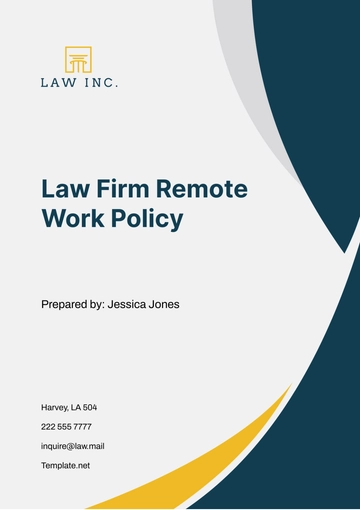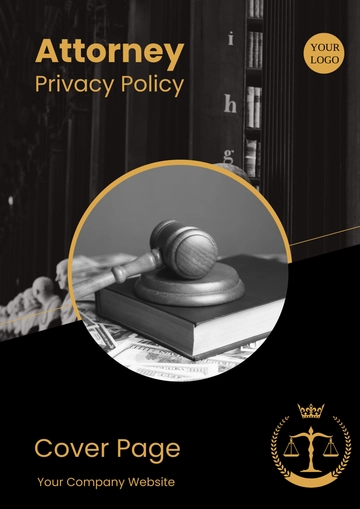Free Law Firm Security Policy
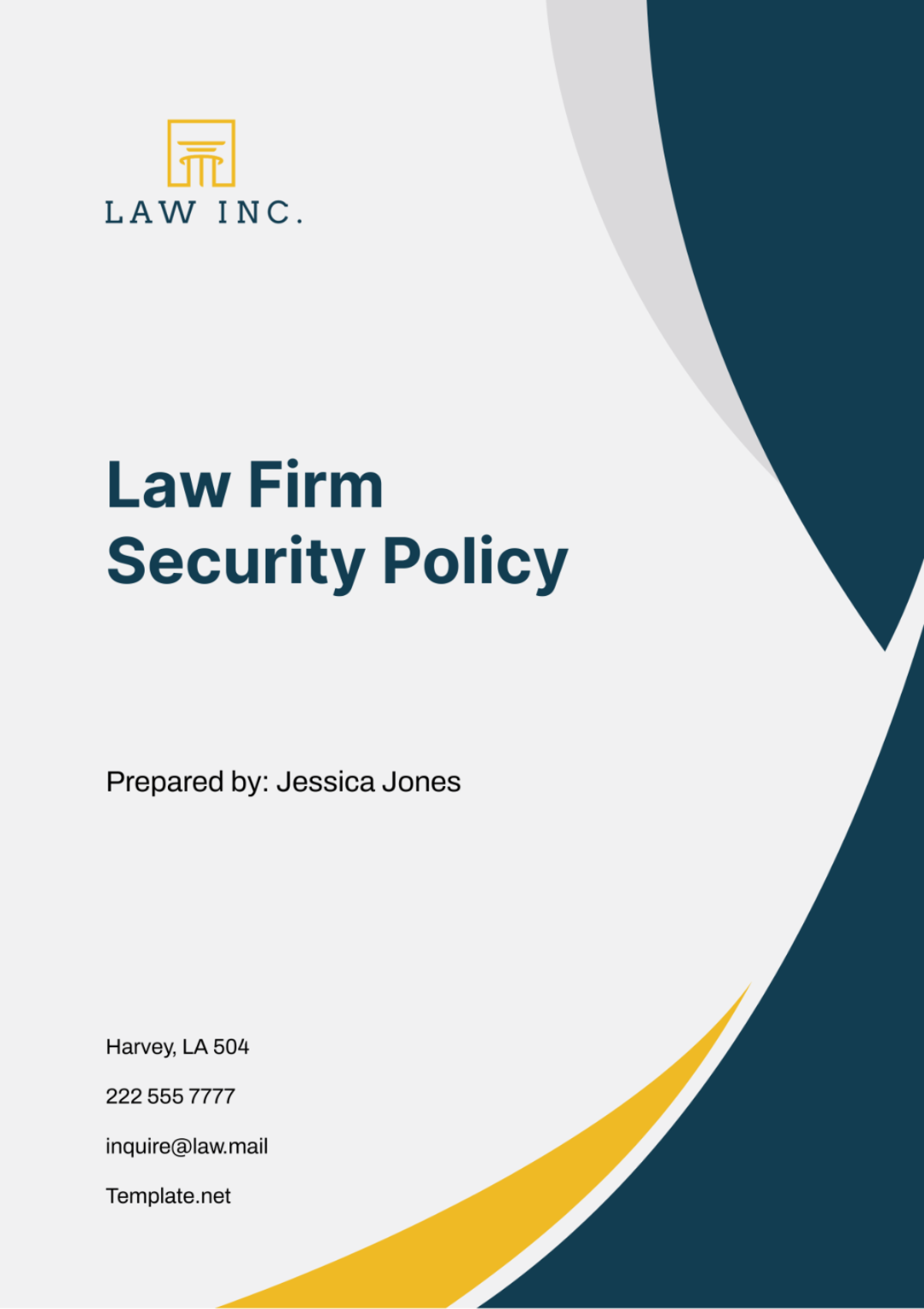
I. Introduction
Welcome to [Your Company Name], where we prioritize the security and confidentiality of our clients' information. This Security Policy outlines our commitment to maintaining the highest standards of security, protecting sensitive data, and mitigating risks associated with unauthorized access or breaches. As a trusted provider of legal services, we understand the importance of safeguarding client information and upholding the trust placed in us.
This Security Policy applies to all employees, contractors, and third parties who handle or have access to sensitive information in the course of their duties. It serves as a guide for ensuring compliance with legal and regulatory requirements, as well as internal policies and procedures related to information security.
II. Policy Statement
At [Your Company Name], we are dedicated to preserving the confidentiality, integrity, and availability of data entrusted to us by our clients. We recognize that protecting sensitive information is essential to maintaining client trust and upholding the reputation of our firm. Therefore, we commit to:
Implementing appropriate security measures to safeguard sensitive data against unauthorized access, disclosure, alteration, or destruction.
Ensuring compliance with relevant laws, regulations, and industry standards pertaining to information security and data privacy.
Providing ongoing training and awareness programs to educate employees about security best practices and their roles in maintaining a secure environment.
Continuously monitoring and evaluating our security controls to identify and address potential vulnerabilities or threats.
III. Data Classification and Access Control
At [Your Company Name], we classify data based on its sensitivity and importance to our operations and clients. This classification helps us apply appropriate access controls and security measures to protect data effectively. Our data classification levels include:
Confidential: Information that is highly sensitive and requires the highest level of protection, such as client financial records, legal documents, and privileged communications.
Internal Use Only: Information intended for internal use within the firm, such as administrative documents, employee records, and non-sensitive client communications.
Public: Information that is intended for public consumption, such as marketing materials, press releases, and general firm information.
Access to confidential and internal use only data is restricted to authorized personnel only, and access rights are granted based on job roles and responsibilities. Access control mechanisms, such as user authentication, role-based access control (RBAC), and encryption, are implemented to ensure that only authorized individuals can access sensitive information.
IV. Physical and Cybersecurity Measures
Physical and cybersecurity measures are in place to protect our offices, facilities, and equipment from unauthorized access, theft, or damage and to protect our digital assets and networks from cyber threats. These measures include:
Controlled Access: Access to our offices and facilities is tightly controlled to prevent unauthorized entry. We employ key card access systems, access codes, or security personnel to monitor and regulate access to physical premises.
Surveillance Systems: We utilize surveillance cameras strategically placed throughout our offices and facilities to monitor and record activities. These systems serve as a deterrent to unauthorized access and provide valuable evidence in the event of security incidents.
Alarm Systems: Our offices are equipped with alarm systems that are activated outside of business hours or in the event of a security breach. These systems alert security personnel and law enforcement agencies, enabling a swift response to any security threats.
Secure Storage: Physical documents and electronic devices containing sensitive information are stored securely to prevent unauthorized access or theft. File cabinets, safes, and secure lockers are used to safeguard sensitive materials when not in use.
Firewalls and Intrusion Detection Systems (IDS): We deploy firewalls and IDS to monitor and filter incoming and outgoing network traffic, protecting our systems and data from unauthorized access and malicious activities.
Antivirus Software: All devices connected to our network are equipped with up-to-date antivirus software to detect and remove malware, viruses, and other malicious software that may compromise the security of our systems.
V. Employee Responsibilities and Training
A. Employee Responsibilities
At [Your Company Name], every employee plays a crucial role in maintaining the security and confidentiality of our clients' information. To fulfill this responsibility effectively, employees are expected to adhere to the following guidelines:
Adherence to Security Policies: Employees must familiarize themselves with and adhere to all security policies, procedures, and guidelines established by the firm. This includes policies related to data classification, access control, and incident response.
Strong Password Management: Employees are responsible for creating and maintaining strong, unique passwords for accessing firm systems and applications. Passwords should not be shared with others and must be changed regularly as per policy requirements.
Protection of Access Credentials: Access credentials, including usernames, passwords, and access tokens, must be safeguarded from unauthorized disclosure or misuse. Employees should not write down or share their credentials with anyone, and multi-factor authentication should be enabled where available.
Reporting Security Incidents: Employees are required to report any security incidents or suspicious activities promptly to the designated incident response team or IT security personnel. This includes incidents such as unauthorized access attempts, data breaches, or malware infections.
Secure Handling of Sensitive Information: Employees must handle sensitive information with care and discretion, both in digital and physical formats. This includes ensuring that documents are stored securely when not in use, avoiding discussing sensitive matters in public areas, and following secure transmission protocols when sharing information.
Compliance with Regulatory Requirements: Employees must comply with all legal and regulatory requirements governing the protection of client information, including laws such as GDPR, HIPAA, and state privacy regulations. Failure to comply with these requirements may result in disciplinary action or legal consequences for the firm and the individual employee.
Participation in Training Programs: Employees are required to participate in ongoing training and awareness programs provided by the firm. These programs cover topics such as cybersecurity best practices, recognizing phishing attempts, and responding to security incidents. By staying informed and vigilant, employees can help prevent security breaches and protect the firm's assets.
B. Employee Training
Training programs may include:
Security Awareness Training: Basic training on security best practices, including password management, recognizing phishing emails, and identifying potential security threats.
Role-Specific Training: Specialized training tailored to specific job roles and responsibilities within the firm, addressing security considerations relevant to those roles.
Incident Response Training: Training exercises and simulations to prepare employees for responding effectively to security incidents, including reporting procedures and containment measures.
VI. Client Confidentiality and Compliance
At [Your Company Name], we understand the importance of maintaining client confidentiality and complying with legal and regulatory requirements related to data privacy. We commit to:
Safeguarding client information from unauthorized access, disclosure, or misuse.
Respecting attorney-client privilege and other legal protections afforded to client communications.
Complying with relevant laws and regulations governing the protection of personal data, such as GDPR, HIPAA, and state privacy laws.
We have implemented policies and procedures to ensure that client information is handled with the utmost care and discretion, including:
Limiting access to client information to authorized personnel only.
Encrypting sensitive data during transmission and storage.
Obtaining explicit consent from clients before sharing their information with third parties, except as required by law or authorized by the client.
VII. Incident Response Plan
Despite our best efforts to prevent security incidents, it is essential to have a robust incident response plan in place to minimize the impact of any potential breaches. Our incident response plan includes the following key components:
Detection: Continuous monitoring of systems and networks for signs of security incidents, such as unusual network traffic or unauthorized access attempts.
Response: Immediate action to contain and mitigate the impact of security incidents, including isolating affected systems, disabling compromised accounts, and restoring backups.
Notification: Timely notification of relevant stakeholders, including clients, regulatory authorities, and law enforcement agencies, as required by law or contractual obligations.
Investigation: Thorough investigation of security incidents to identify the root cause, assess the extent of the damage, and implement corrective actions to prevent recurrence.
Documentation: Comprehensive documentation of security incidents, including incident details, response actions taken, and lessons learned for future improvements.
VIII. Appendices
Contact Information: Contact details for reporting security incidents, including email addresses and phone numbers of designated incident response team members.
Glossary of Terms: Definitions of key terms and concepts related to information security and data privacy.
Legal Citations: References to relevant laws, regulations, and industry standards governing information security and data privacy.
Additional Resources: Links to external resources, such as training materials, best practice guides, and industry associations, for further information on information security and data privacy.
This Security Policy serves as a framework for maintaining the security and confidentiality of information at [Your Company Name]. By adhering to these policies and procedures, we demonstrate our commitment to protecting our clients' interests and upholding the trust placed in us as legal professionals.
- 100% Customizable, free editor
- Access 1 Million+ Templates, photo’s & graphics
- Download or share as a template
- Click and replace photos, graphics, text, backgrounds
- Resize, crop, AI write & more
- Access advanced editor
Secure your law firm with Template.net's Law Firm Security Policy Template. Editable in our AI Editor Tool, this customizable template provides a structured format for establishing comprehensive security policies and procedures to protect your firm's assets, personnel, and information. Enhance security awareness, mitigate risks, and promote a safe work environment effortlessly!
You may also like
- HR Policy
- Restaurant Policy
- Company Policy
- Accounting Policies and Procedures
- Website Policy
- Privacy Policy
- Safety Policy
- School Policy
- IT and Software Policy
- Law Firm Policy
- Construction Policy
- Interior Design Policy
- Travel Agency Policy
- Education Academic Policy
- Security Policy
- Real Estate Policy
- Expense Policy
- Software Policy
